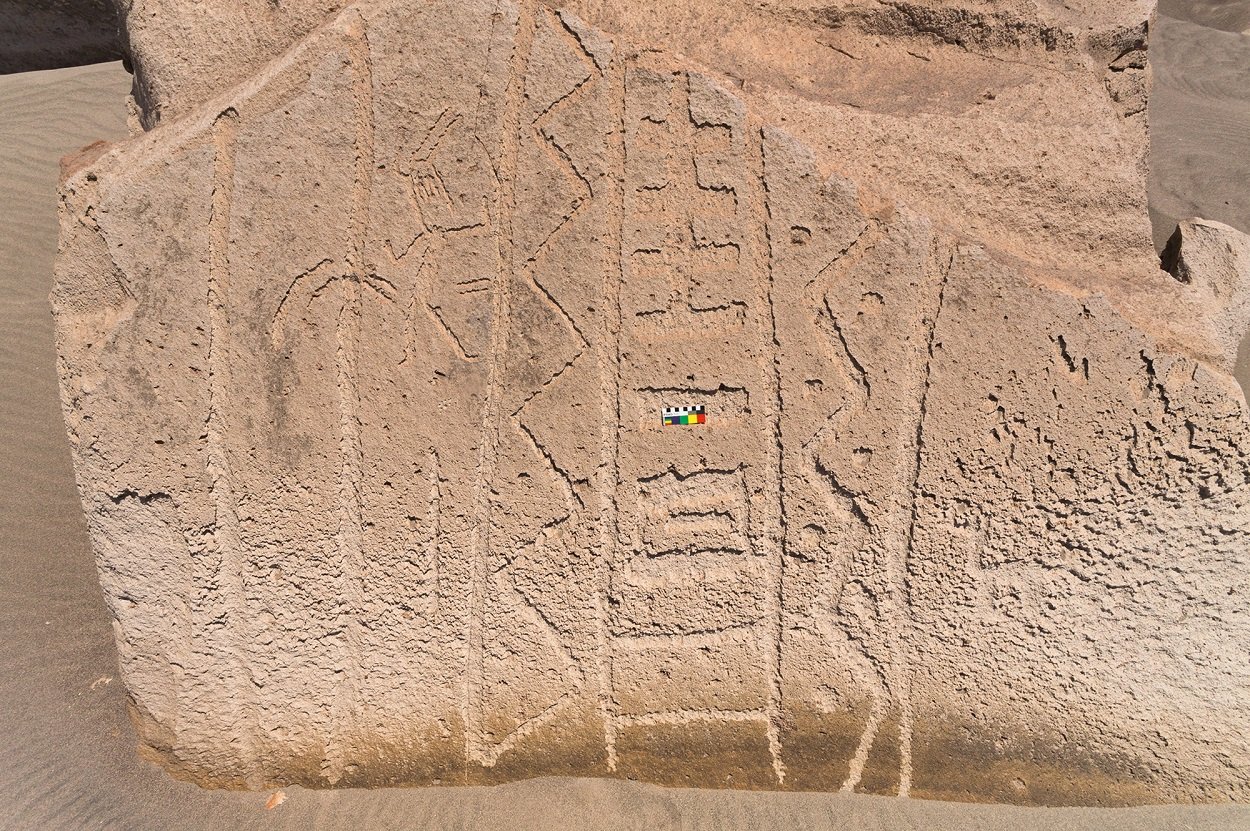A new study, published in the Cambridge Archaeological Journal, suggests that geometric petroglyphs found at Toro Muerto in Peru are representations of ancient songs.
Toro Muerto, meaning “Dead Bull”, is a collection of petroglyphs in Peru’s Castilla province. The site contains over 3000 volcanic rocks inscribed with petroglyphs from the Wari Culture, a Middle Horizon civilisation the flourished from between AD 500 to 1000.
One of the unique aspects of the petroglyph iconography at Toro Muerto are images of dancing anthropomorphic human-like figures known as danzantes, which are accompanied with geometric motifs of zigzag line variants and sometimes with accompanying dots or circles.
Previous interpretations have suggested that the zigzag lines might be symbolic of snakes or lightning, with a possibly association to fertility and water cults.
However, by drawing on parallels with the Tukano people of the Colombia rainforest, the study authors suggest that the petroglyphs at Toro Muerto are abstract representations of ancient singing and songs.
Tukano motifs in art is rooted in visionary experiences evoked by the ritual consumption of the psychoactive drink yajé/yage made from Banisteriopsis caapi jungle vine.

They created art forms with concentric circles, dots, wavy lines, zigzags and crenellation motifs, that referred to creation myths that were topics the Tukano implied in dances and songs sung to the accompaniment of musical instruments.
Furthermore, different examples of Mesoamerican iconography (Maya, Mixtec and Nahua codices) have such dots or lines (also spiral-shaped) that possibly depict songs in visual form as a representation of the sonic sphere of culture.
Therefore, considering how important the sonic sphere, including songs, is in the cultures of both Amazonia and the Andes, the study authors argue that the graphic depiction of songs in petroglyphs might not be a unique phenomenon and may have existed in various other cultures such as the Wari at Toro Muerto.
According to the study authors: “In our study we show that some geometric images could have been representations or embodiments of songs themselves, in their own right, independent of any depictions of mouths or bodies. We base this study on the case of the petroglyphs at Toro Muerto in Peru, while the source of our interpretative proposal is ethnographic knowledge, more precisely an ethnographic analogy from Amazonia, specifically the art of the Tukano people.”
An expansion of this hypothesis proposes that certain intricate compositions, featuring dancers and linear geometric patterns, symbolised a journey to the afterlife.
Header Image Credit : A. Rozwadowski
Sources : Cambridge Archaeological Journal – Rozwadowski A, Wołoszyn JZ. Dances with Zigzags in Toro Muerto, Peru: Geometric Petroglyphs as (Possible) Embodiments of Songs. Cambridge Archaeological Journal. Published online 2024:1-21. doi:10.1017/S0959774324000064





